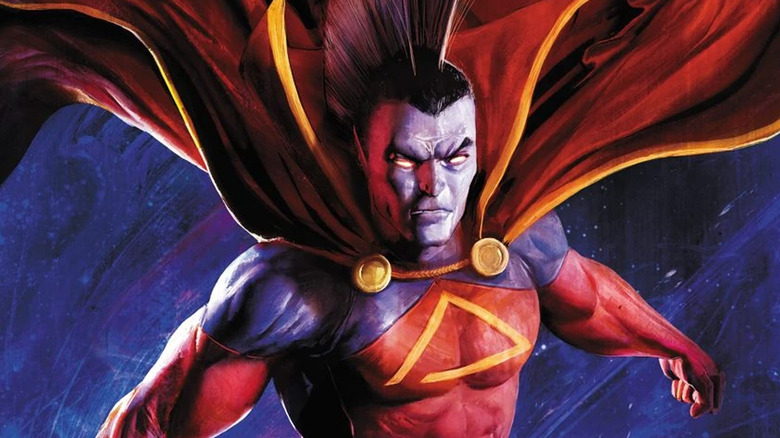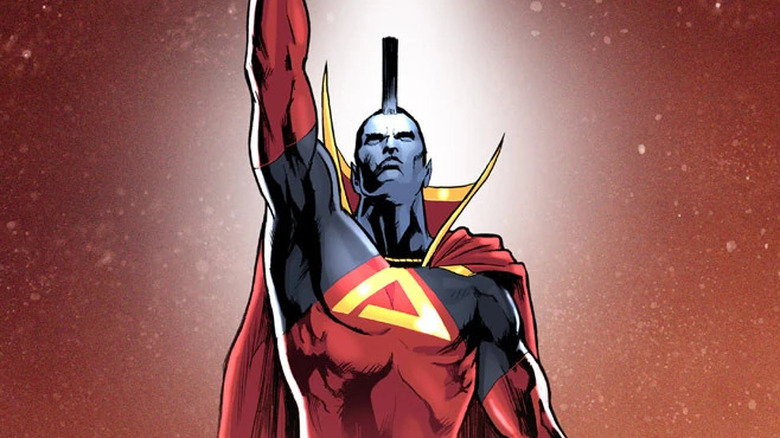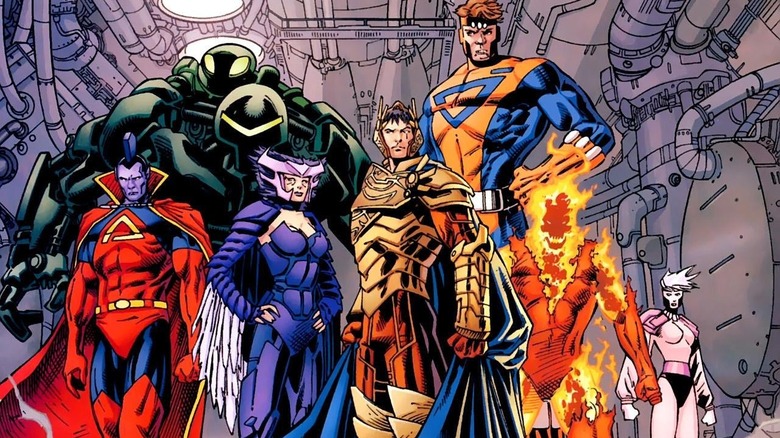Who Is Gladiator? The Powers & One Weird Weakness Of X-Men '97's Cosmic Superman
"X-Men '97" went to space in Season 1, Episode 6 – "Lifedeath – Part 2," with the show revealing that Charles Xavier, previously believed to be dead after reaching his supposed end in the original "X-Men: The Animated Series," is alive, well, and living in the Shi-Ar Empire. In showcasing the Shi'ar, including Professor X's soon-to-be wife Lilandra, audiences also met one of the most powerful heroes in the Marvel Universe: Gladiator, a key member of the Shi'ar Imperial Guard. However, despite having incredible abilities and being one of Marvel's analogs to Superman, the character has a surprising weakness: if his confidence drops, his powers weaken or disappear.
The Marvel Universe is filled with characters who are inspired by and borrow different elements from Superman. From Sentry, who has the "power of a million exploding suns," to Hyperion, who has similar powers to the Man of Steel and leads Marvel's Justice League-like team, the Squadron Supreme, to Blue Marvel, who also parallels Superman's powers and origin story, but is reframed through the lens of being a Black man during the 1960s. But Gladiator is unique among Marvel's supermen.
One of Marvel's oldest Superman equivalents, debuting in "The Uncanny X-Men" #107 (created by Chris Claremont and Dave Cockrum), Gladiator is a member of the Strontian race who became a warrior for the Shi'ar Empire, using his super strength and other abilities to become one of its greatest weapons. The hero has blue skin, a tall, black mohawk, and a variety of powers that pack a serious punch. But, as several stories have revealed, Gladiator's wavering confidence can reduce the Superman-esque hero into a much weaker threat than he typically is.
Gladiator's weakness is unusual
Marvel's Gladiator is one of the publisher's strongest heroes. He possesses similar abilities to Superman, including super strength, durability, speed, heat vision, and flight. But while he is vulnerable to certain forms of radiation, his major weakness doesn't involve a Kryptonite-like substance. Rather, it's his confidence level. The more the Gladiator loses hope in victory and feels his internal struggles rise, the weaker he becomes.
Gladiator's unique vulnerability was first revealed in "Fantastic Four" #250 (by John Byrne, Christie Scheele, and Joe Rosen), where he believes he's fighting Reed Richards. In actuality, he attacks a disguised Captain America who defends himself with his indestructible shield, and when Gladiator's powerful optic beams have no effect on "Mr. Fantastic," he questions himself, allowing the Invisible Woman to knock him out. Upon defeating the Shi'ar soldier, Reed notes that since Gladiator's powers are psionic in nature, he becomes weaker when he doubts his own abilities.
In a fight with the invulnerable X-Men hero, Cannonball, in "Uncanny X-Men" #341 (by Scott Lobdell, Joe Madureira, Tim Townsend, Steve Buccellato, and Richard Starkings), Gladiator unleashes his full might on the mutant and doesn't cause a dent. As a result, his confidence is shaken, and he immediately becomes vulnerable to his opponent's responding attack. Cannonball swiftly takes him out, despite the noticeable power difference between them. In short, to defeat Gladiator, his enemies need to make him believe, if only for a moment, that he's not a Superman-level threat.
Gladiator's team was based on DC heroes
Confidence weakness aside, Gladiator's resemblance to Superman is no accident; in fact, the entire Imperial Guard is an homage to DC's team of futuristic heroes, the Legion of Super-Heroes, of which Superboy is famously a member. Several heroes on the Guard's roster sport nearly identical powers to the Legion, including Astra's projection-based abilities echoing Phantom Girl's, Oracle having mind-powers similar to Saturn Girl, and Fang's wolf-like appearance and abilities mirroring Timber Wolf. Dave Cockrum, who co-created the Imperial Guard alongside Chris Claremont, also worked on "The Legion of Super-Heroes" during the 1970s and '80s. He showed the designs to "Legion" scribe Paul Levitz before the group debuted, who not only liked the idea but, according to Cockrum, said, "Geez, these costumes are better than the ones the Legionnaires are wearing."
For further proof that Gladiator and the Imperial Guard were direct riffs on the Legion of Super-Heroes, look no further than the hero's actual name. Kallark combines the names of Superman's Kryptonian name, Kal-El, and his human name, Clark Kent. Yes, the Marvel hero has a wildly different overall aesthetic than DC's Man of Tomorrow, but it was never a secret that the Legion of Super-Heroes, including Superman/Superboy, were the direct inspirations for him and his team. Ultimately, the two squads share similarities to this day, although the Imperial Guard has differentiated itself enough to become its own thing and escape the shadow of the Legion.


